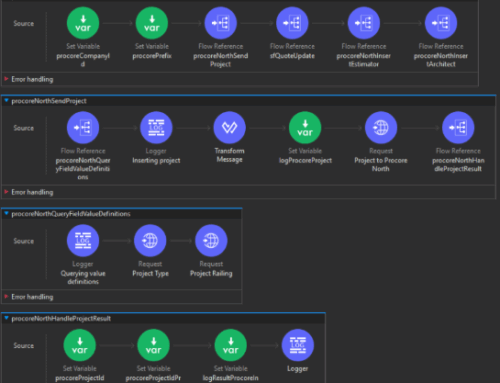The CEO & the CRM: 5 Tips for Successful Adoption
A Customer Relationship Management (CRM) system is a necessary and exciting sales productivity tool for any company. It is a leading indicator of how your business will perform: you can see selling activity, which leads to pipeline growth, which leads to better sales forecasting, which leads to actual sales. But all too often, this big-ticket software purchase becomes a source of friction between you and your go-to-market team: adoption is low, the data is incomplete, and several sales reps steadfastly refuse to use it.
And you, the CEO, are left wondering, “Why?”
Based on years and years of successful CRM installations and optimizations, we find the following roadmap to be critical.
1. Perception Mindset is Critical to Adoption
If you approach the CRM as a “reporting tool” for an executive benefit, you will have lost before you’ve begun. While a CRM IS an invaluable path to transparency into your organization’s performance reporting tool for you and senior management, referencing focusing only on what reports you get out of it, rather than how it makes sales more effective, it as such to sales makes it sound like establishes that Big Brother is watching. And it just drops another administrative burden on sales.
Don’t be that CEO. Perception matters.
Carrots and sticks. The CRM will only be an effective reporting tool for you if Sales perceive the software as a “productivity tool,” something that will enable them to close the most deals in the fewest number of prospect touches possible. You get superior data if they want to use it.
Pulse Check: You ask Sales Ops to list how Salesforce has made sales more productive and efficient. And they can’t show you without thinking about it. You do a sales ride-along, and you don’t see the sales rep opening Salesforce multiple times during the day – phone, tablet, and laptop.
2. Change Management
Always keep in mind that a CRM is not magic, it does simply get dropped into your organization, get embraced, and automatically start working. It will never fit you right out of the box. Plan the roll out before you begin building the system to ensure that management and staff alike are appropriately trained and supported from launch. The first 3-6 months after rollout require intense attention on your part, the demand of “Show me, show me, show me.”
- “Sales Ops, what’s your training plan?”
- “Sales leaders, have you required attendance at training?”
- “VP of Sales, show me our progress … from Salesforce dashboards.”
The most successful launch we ever witnessed involved the VP of Sales demanding his entire team enters all their data “by Wednesday” after we launched and trained on Monday. While seemingly draconian, his demand was met. More notably, the rule was firmly established from the outset: the CRM wasn’t paperwork to be filed later, it was the new methodology for conducting business. You better bet that the sales team came back to us begging for reinforcing training.
Pulse Check: You sit in on sales meetings, and they’re not run from metrics in Salesforce. You ask a sales rep to show you how she uses Salesforce and what she’s supposed to get out of it, and she’s hesitant and unsure.
3. Mandate Usage by Management as well as Sales
You’ve heard, “If it’s not in Salesforce, it doesn’t exist”, but that can be a source of resentment if management excuses themselves from the mandate. More notably, piecemeal adoption undermines the CRM’s data, which in turn undermines your investment and goals. Everyone must be on board, and that requires leading from the front.
- If you are running reports or doing management reviews, do so from a dashboard within the CRM, and project it onto the screen.
- If your management team hands you a report in Excel or PowerPoint, hand it back. Tell them to put it in the CRM and use the management tools there.
- A key indicator of whether adoption is succeeding is if you have requests for new dashboards. If you don’t, there’s a problem.
Pulse Check: You ask Salesforce admin about the new dashboards and reports the c-suite has demanded of them during the previous year. And hear “uh, no asks.” Or. You sit in on the VP of Sales team review, and the meeting isn’t run from a Salesforce dashboard.
4. Keep Your Data Clean
Treat your data like the valued asset it is by incorporating a data quality program. Give that program resources for monitoring and management. Best run organizations have a data quality score: they know what pieces of data are critical to have in the system, ensure it is updated, and track results, so the data stays clean and reliable. Data that is wrong or even duplicated will frustrate your staff, which affects adoption, and as a result, the data will be junk.
A good policy to consider is: no “little black books”. A rep or a manager that fills in the CRM but relies on a private log for their own personal use isn’t fully participating and gaining the productivity the system can provide to them. Your Sales Ops team should license data hygiene software specially built for Salesforce, and they should routinely run scenarios to scrub the database (ask to see what they do).
Pulse Check: There are complaints about data duplication or inaccuracy. You ask to see the data quality process or the current state of data quality and get a blank stare.
5. Measure Adoption
Measuring is critical to adoption. Start by checking whether your people are logging in. Look for volumes of data records created. Once your processes are embedded, look for compliance – are calls to key accounts always logged every 30 days, are key contacts present on prospect companies, is your sales pipeline complete and up-to-date, do your forecasts reflect reality?
Finally, survey your people regularly and make sure that the system is meeting their needs and identify new features.
Pulse Check: A meaningful percent of reps have not logged in within the last few days. You don’t see “exceptions reports” on dashboards that highlight non-compliance. You find you can’t trust the numbers yourself …
In Closing
You have a market strategy, a sales strategy, and corporate strategy. You should have a CRM strategy. Develop a CRM roadmap, complete with quarterly goals.
Remember this is a living, breathing tool. It will never be fully built out. You are always building, adding functionality and capability.
Remember that a CRM is not a magic bullet – it does not run itself. Successful adoption requires commitment. But with dedication, the ROI is visible and real. We have assisted created in Salesforce.com (SFDC) functionality that saves each an individual sales rep 40-60 hours of paperwork per year; that’s, a full week and a half of admin time now available for facetime with that is spent on clients, rather than administration. You also attain the top of the line growth: you can solidify and align your business processes to best practices as a matter of routine. Finally, you gain better visibility into your business: a 360-degree view of your customers, knowing which ones to go after and who can go after them most effectively.






